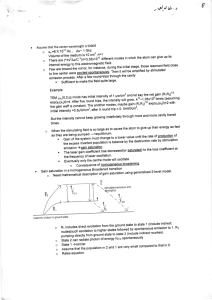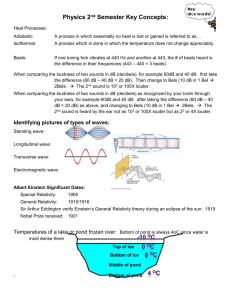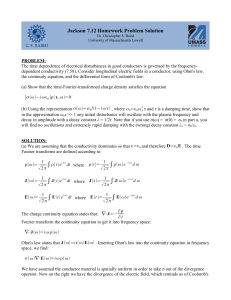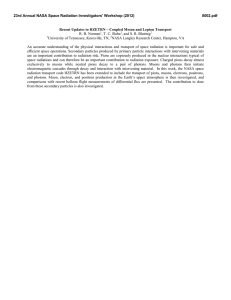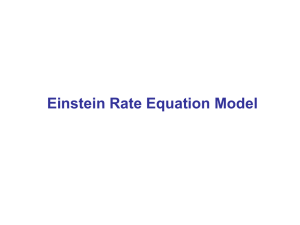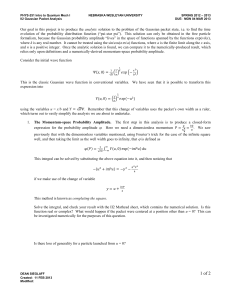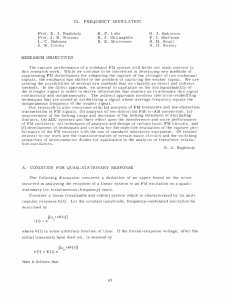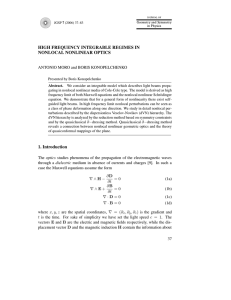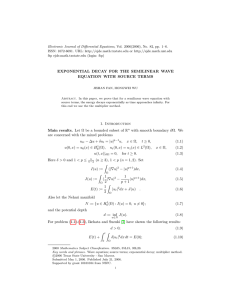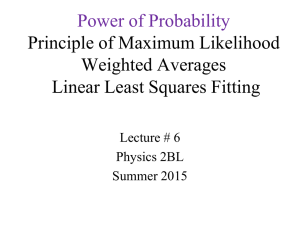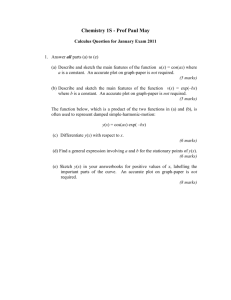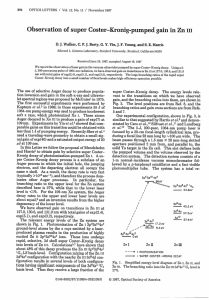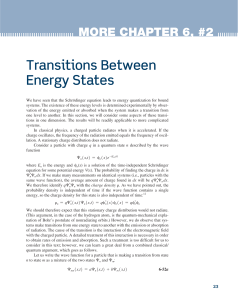Tarea 3 - Cinvestav
advertisement
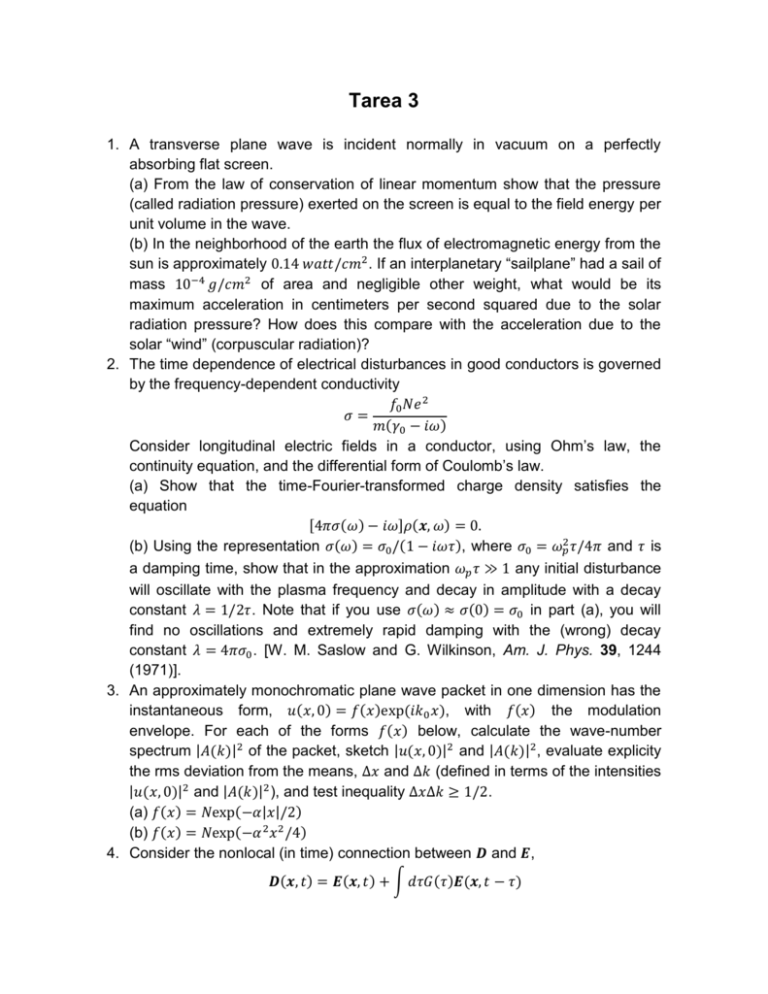
Tarea 3 1. A transverse plane wave is incident normally in vacuum on a perfectly absorbing flat screen. (a) From the law of conservation of linear momentum show that the pressure (called radiation pressure) exerted on the screen is equal to the field energy per unit volume in the wave. (b) In the neighborhood of the earth the flux of electromagnetic energy from the sun is approximately 0.14 𝑤𝑎𝑡𝑡/𝑐𝑚2. If an interplanetary “sailplane” had a sail of mass 10−4 𝑔/𝑐𝑚2 of area and negligible other weight, what would be its maximum acceleration in centimeters per second squared due to the solar radiation pressure? How does this compare with the acceleration due to the solar “wind” (corpuscular radiation)? 2. The time dependence of electrical disturbances in good conductors is governed by the frequency-dependent conductivity 𝑓0 𝑁𝑒 2 𝜎= 𝑚(𝛾0 − 𝑖𝜔) Consider longitudinal electric fields in a conductor, using Ohm’s law, the continuity equation, and the differential form of Coulomb’s law. (a) Show that the time-Fourier-transformed charge density satisfies the equation [4𝜋𝜎(𝜔) − 𝑖𝜔]𝜌(𝒙, 𝜔) = 0. (b) Using the representation 𝜎(𝜔) = 𝜎0 /(1 − 𝑖𝜔𝜏), where 𝜎0 = 𝜔𝑝2 𝜏/4𝜋 and 𝜏 is a damping time, show that in the approximation 𝜔𝑝 𝜏 ≫ 1 any initial disturbance will oscillate with the plasma frequency and decay in amplitude with a decay constant 𝜆 = 1/2𝜏. Note that if you use 𝜎(𝜔) ≈ 𝜎(0) = 𝜎0 in part (a), you will find no oscillations and extremely rapid damping with the (wrong) decay constant 𝜆 = 4𝜋𝜎0 . [W. M. Saslow and G. Wilkinson, Am. J. Phys. 39, 1244 (1971)]. 3. An approximately monochromatic plane wave packet in one dimension has the instantaneous form, 𝑢(𝑥, 0) = 𝑓(𝑥)exp(𝑖𝑘0 𝑥), with 𝑓(𝑥) the modulation envelope. For each of the forms 𝑓(𝑥) below, calculate the wave-number spectrum |𝐴(𝑘)|2 of the packet, sketch |𝑢(𝑥, 0)|2 and |𝐴(𝑘)|2, evaluate explicity the rms deviation from the means, ∆𝑥 and ∆𝑘 (defined in terms of the intensities |𝑢(𝑥, 0)|2 and |𝐴(𝑘)|2 ), and test inequality ∆𝑥∆𝑘 ≥ 1/2. (a) 𝑓(𝑥) = 𝑁exp(−𝛼|𝑥|/2) (b) 𝑓(𝑥) = 𝑁exp(−𝛼 2 𝑥 2 /4) 4. Consider the nonlocal (in time) connection between 𝑫 and 𝑬, 𝑫(𝒙, 𝑡) = 𝑬(𝒙, 𝑡) + ∫ 𝑑𝜏𝐺(𝜏)𝑬(𝒙, 𝑡 − 𝜏) with the 𝐺(𝜏) appropriate for the single-resonance model, 𝜖(𝜔) = 1 + 𝜔𝑝2 (𝜔02 − 𝜔2 − 𝑖𝛾𝜔)−1 . (a) Convert the nonlocal connection between 𝑫 and 𝑬 into an instantaneous relation involving derivatives of 𝑬 with respect to time by expanding the electric field in the integral in a Taylor series in 𝜏. Evaluate the integrals over 𝐺(𝜏) explicitly up to at least 𝜕 2 𝑬/𝜕𝑡 2 . (b) Show that the series obtained in (a) can be obtained formally by converting the frequency-representation relation, 𝑫(𝒙, 𝜔) = 𝜖(𝜔)𝑬(𝒙, 𝜔), into a space-time relation, 𝜕 𝑫(𝒙, 𝑡) = 𝜖 (𝑖 ) 𝑬(𝒙, 𝑡), 𝜕𝑡 where the variable 𝜔 in 𝜖(𝜔) is replaced by 𝜔 → 𝑖(𝜕/𝜕𝑡).


